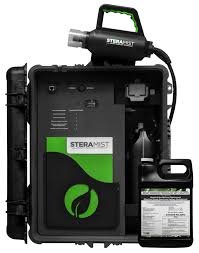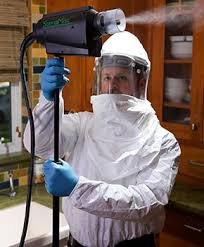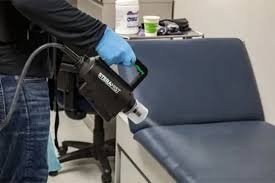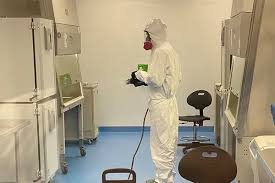tHE FIRE DUDES BRAND.
THE FIRE DUDES “TURNING DISASTER’S INTO BLESSING’S”
“THE FIRE DUDES BRAND”
COVID 19 & RSV VIRUS CONTROL & SANITIZING METHODS
Understanding RSV and Proactive Sanitizing Practices for Pandemic Prevention
Respiratory Syncytial Virus (RSV) is a highly contagious virus that affects the respiratory tract, causing mild cold-like symptoms in adults and older children but posing a significant health risk to infants, young children, and older adults, especially those with underlying health conditions. RSV is known to cause severe respiratory illness, leading to hospitalization for vulnerable populations and potentially progressing to pneumonia or bronchiolitis. As RSV circulates, proactive sanitizing and preventive practices become crucial, not only to protect at-risk individuals but also to prevent an outbreak from escalating into a pandemic. By implementing strategic sanitizing protocols, businesses, schools, healthcare facilities, and public spaces can mitigate the spread of RSV effectively and prepare for potential respiratory outbreaks.
RSV Transmission and Risk Factors
RSV is transmitted primarily through respiratory droplets, which are expelled when an infected person coughs, sneezes, or talks. The virus can also survive on surfaces like countertops, doorknobs, and handrails for several hours, making surface contamination a significant mode of transmission. Individuals who come into contact with these surfaces and subsequently touch their face, particularly around the mouth, nose, or eyes, are at risk of infection. Young children attending daycare, elderly individuals in communal living situations, and those with weakened immune systems are especially susceptible to severe RSV infection. As RSV cases have surged in recent years, the virus has demonstrated a pattern of widespread seasonal outbreaks, prompting health professionals to advocate for enhanced preventive measures. Although RSV primarily affects the respiratory system, the potential for severe complications makes it essential to approach RSV with the same level of caution as other respiratory illnesses like the flu or COVID-19. In environments with high population density or close interactions, proactive and consistent sanitizing measures are fundamental to controlling RSV transmission and ensuring public health.
Recommended Sanitizing Practices for Preventing RSV Spread To prevent the spread of RSV, a systematic sanitizing protocol should be established and maintained, particularly in high-traffic areas such as schools, childcare centers, healthcare facilities, and workplaces. These practices should aim to reduce viral presence on frequently touched surfaces, minimize respiratory droplet exposure, and promote personal hygiene among occupants. Key recommendations for maintaining effective sanitizing protocols include:
1. Frequent Surface Disinfection: High-touch surfaces like door handles, elevator buttons, handrails, light switches, and communal equipment should be disinfected multiple times throughout the day. Cleaning staff should use EPA-approved disinfectants known to be effective against respiratory viruses, including RSV. Special attention should be given to break rooms, bathrooms, shared equipment, and waiting areas, as these spaces are more likely to host viral particles due to their high usage.
2. Ventilation and Air Quality Control: Ensuring good air circulation and quality is crucial in reducing the transmission of respiratory viruses. Facilities should increase ventilation by opening windows where possible or using HVAC systems that include air filters with high MERV ratings to capture virus particles. Portable HEPA filters can also be used in rooms with poor ventilation to improve air quality and reduce the concentration of airborne particles.
3. Hand Hygiene Promotion: Encouraging regular hand hygiene is one of the most effective ways to prevent RSV spread. Hand sanitizing stations should be placed at strategic locations, including building entrances, hallways, and near high-touch areas. Signage can be used to remind individuals of the importance of handwashing, particularly before eating or after touching shared surfaces. In schools and workplaces, promoting hand hygiene through regular reminders and educational materials can significantly enhance compliance.
4. Personal Protective Equipment (PPE): Although RSV does not always require mask-wearing outside healthcare settings, providing PPE during high-risk seasons (fall and winter) can be beneficial in crowded indoor environments. Surgical masks or N95 respirators are particularly effective in preventing viral spread, especially in hospitals, nursing homes, and other settings with vulnerable populations. Workers in these environments should also be trained on the proper use and disposal of PPE.
5. Sanitizing Shared Items: Shared objects, such as office supplies, electronics, and toys in daycare settings, should be sanitized after each use. Where possible, it is advisable to assign personal items to minimize sharing and potential cross-contamination. Items that cannot be cleaned frequently, such as soft furnishings, should be limited in communal spaces or replaced with easy-to-clean alternatives.
Proactive Measures for Pandemic Preparedness In the face of rising RSV cases and the potential for widespread outbreaks, businesses and institutions should adopt proactive measures that go beyond routine sanitizing to prepare for potential pandemic scenarios. Establishing a framework that includes infection control policies, staff training, and adaptable contingency plans can help ensure a rapid response to any escalation in RSV cases. Essential proactive measures include:
1. Infection Control Policies: Developing clear, consistent infection control policies is fundamental to managing RSV risk and preventing an outbreak. These policies should outline sanitizing protocols, establish procedures for isolating symptomatic individuals, and detail actions to be taken in the event of increased infection rates. Such policies can provide a standardized approach to infection prevention, ensuring everyone understands their roles in maintaining a safe environment.
2. Employee and Occupant Training: Educating staff, students, and facility occupants on RSV transmission and prevention measures can improve compliance with infection control guidelines. Training should focus on proper hand hygiene, the importance of not sharing personal items, and the correct use of PPE. For healthcare and daycare facilities, additional training on recognizing RSV symptoms and responding to potential cases is essential.
3. Health Monitoring and Symptom Screening: During high RSV season, businesses and facilities can implement symptom screening protocols to identify individuals who may be infected. These screenings can include checking for respiratory symptoms or fever at entry points, as well as encouraging self-reporting of symptoms. Establishing clear guidelines on when individuals should stay home if they exhibit symptoms can reduce RSV transmission risks.
4. Establishing Quarantine Protocols: For facilities with communal living or close-contact environments, such as dormitories, healthcare settings, and residential care facilities, establishing protocols for quarantining symptomatic individuals can prevent the spread of RSV. These protocols should include designated areas for isolation, routine monitoring of infected individuals, and sanitizing procedures to prevent cross-contamination.
5. Communication and Transparency: Keeping employees, tenants, and other occupants informed about RSV prevention measures and protocols builds trust and promotes collective action. Facilities should have a communication plan in place to inform occupants of any changes in protocols, sanitizing schedules, or health requirements, especially during peak RSV season.
6. Supply Chain Management for Sanitizing Supplies: Facilities should ensure an adequate stockpile of essential sanitizing supplies, PPE, and disinfectants to maintain continuous sanitizing operations. During peak seasons or potential pandemics, supply chain disruptions may occur; therefore, having a reserve of necessary materials helps maintain effective sanitizing practices without interruption.
7. Contingency Planning for Remote Work and Reduced Capacity: Businesses that can operate remotely should prepare plans to transition employees to remote work if RSV cases rise sharply. For essential workplaces, contingency plans that include reduced occupancy, staggered shifts, and additional sanitizing rotations can help mitigate infection risk.
“Conclusion”
Implementing these recommended sanitizing practices and proactive pandemic preparedness measures can significantly reduce the spread of RSV and other respiratory viruses. By fostering a culture of hygiene, investing in sanitizing protocols, and establishing comprehensive response plans, organizations can ensure a safe environment for all occupants and demonstrate a strong commitment to public health.
“THE FIRE DUDES BRANDS”.
“THE FIRE DUDES BRAND”





